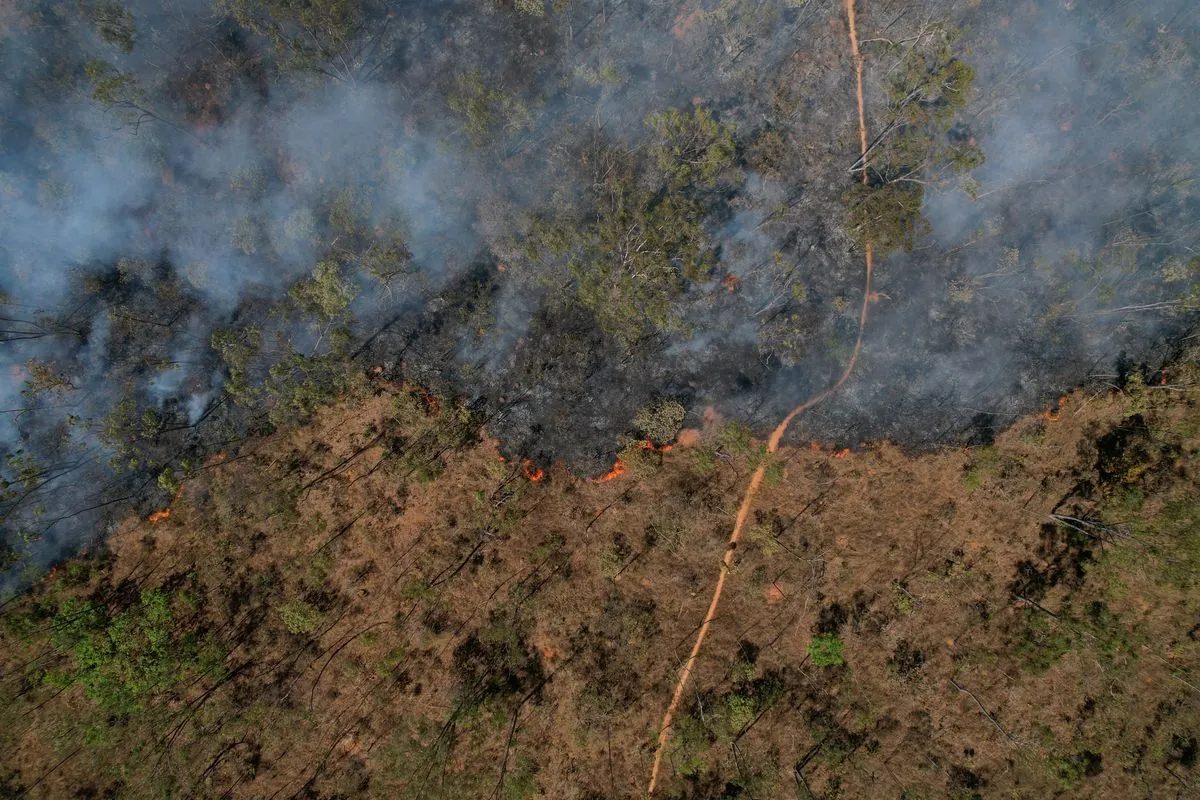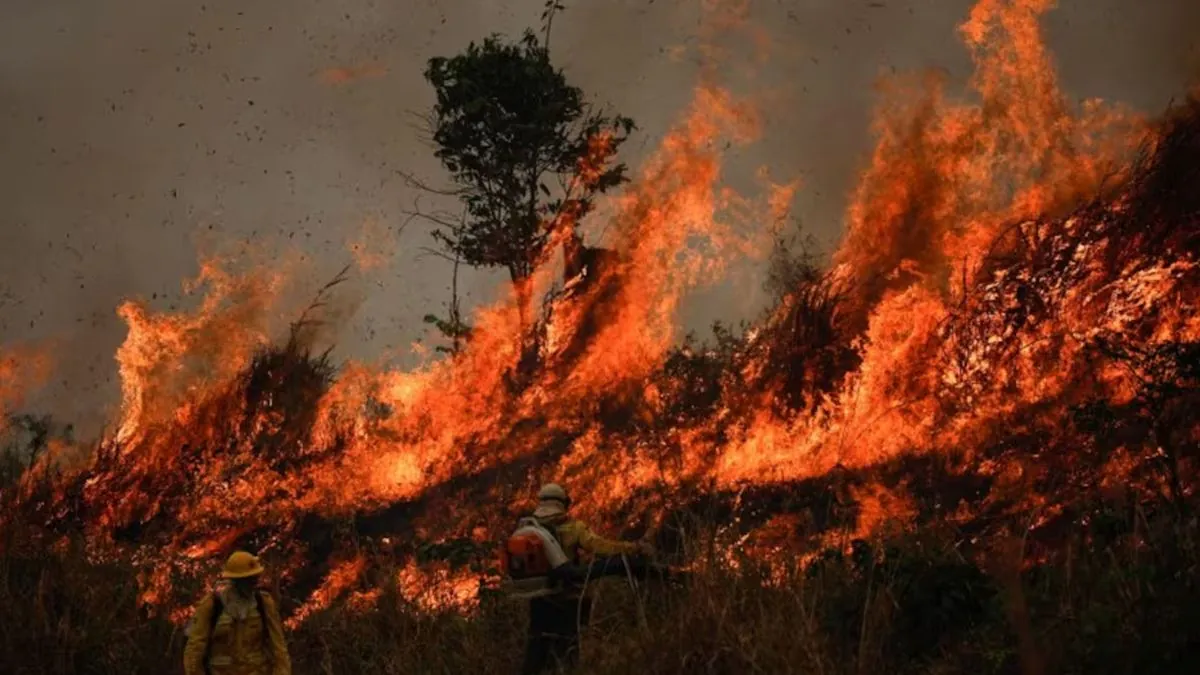Brasilia's National Forest Fire: 20% Destroyed, Arson Suspected
A massive wildfire in Brasilia's National Forest, crucial for the city's water supply, has been partially contained. Arson is suspected as the cause, amid concerns over increased Amazon fires due to drought and climate change.

In a concerning development, a significant wildfire has impacted the National Forest of Brasilia, a vital conservation area established in 1999. The fire, which began approximately one year ago, consumed 20% of the forest before firefighters managed to reduce its extent after two days of intense efforts.
The affected area, spanning 5,600 hectares, plays a crucial role in protecting the springs that supply 70% of Brasilia's freshwater. This incident has raised alarms about the vulnerability of this UNESCO World Heritage Site, known for its distinctive airplane-like urban design and modernist architecture.
Fabio dos Santos Miranda, the forest manager, stated, "We have extinguished three of the four blazes and anticipate having the fire under control by day's end." He added that while environmental crime is suspected, intentionality remains unconfirmed. Three potential arsonists were reportedly spotted near the fire's origin.
The fire's timing coincided with the peak of the dry season, which typically lasts from May to September in Brasilia's tropical savanna climate. This period of parched vegetation and high temperatures created ideal conditions for rapid fire spread.

Firefighters faced challenges in containing the blaze and preventing its spread to nearby orchards. Major Godoy, a firefighter on the scene, explained, "We're working to safeguard the orchards, but wind is propelling the fire towards them, with sparks traveling considerable distances."
The incident has reignited discussions about environmental protection in Brazil. In 2022, under the administration of former President Jair Bolsonaro, the forest's size was reduced by almost half to accommodate urban development. This decision, coupled with reduced environmental controls, contributed to a surge in Amazon rainforest deforestation.
Recent data reveals that August 2023 saw the highest level of fires in the Amazon since 2010. This increase is attributed to a record drought exacerbated by the El Niño phenomenon, which has been intensified by climate change. The late and weak rainy season in 2022 left the rainforest particularly susceptible to fires this year.
The Amazon, covering approximately 5.5 million square kilometers and home to about 10% of the world's known biodiversity, faces growing threats. Climate change is expected to increase the frequency and intensity of droughts in the region, potentially leading to more severe fire seasons in the future.
As Brasilia grapples with the aftermath of this fire, the incident serves as a stark reminder of the delicate balance between urban development and environmental conservation. It also highlights the urgent need for robust fire prevention strategies and climate action to protect vital ecosystems like the National Forest of Brasilia and the broader Amazon rainforest.


































